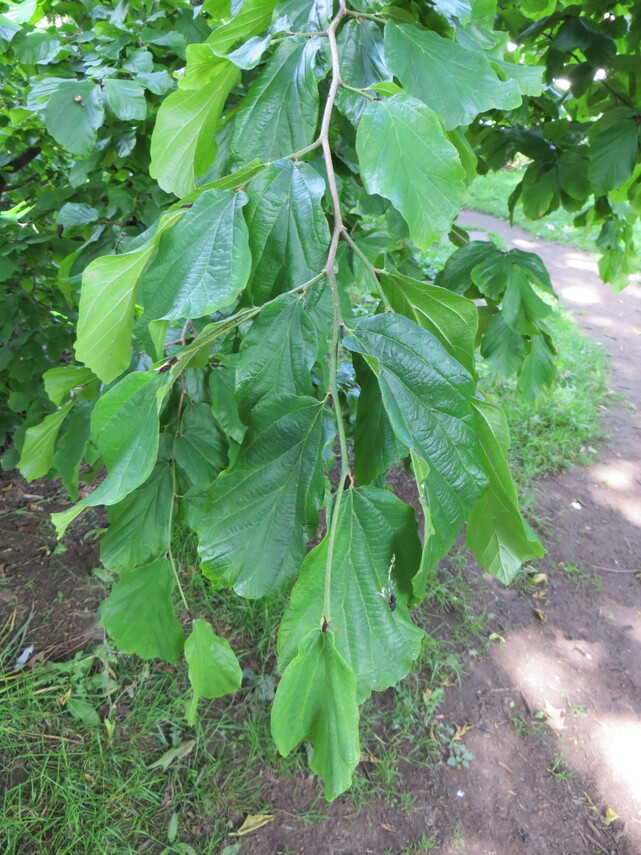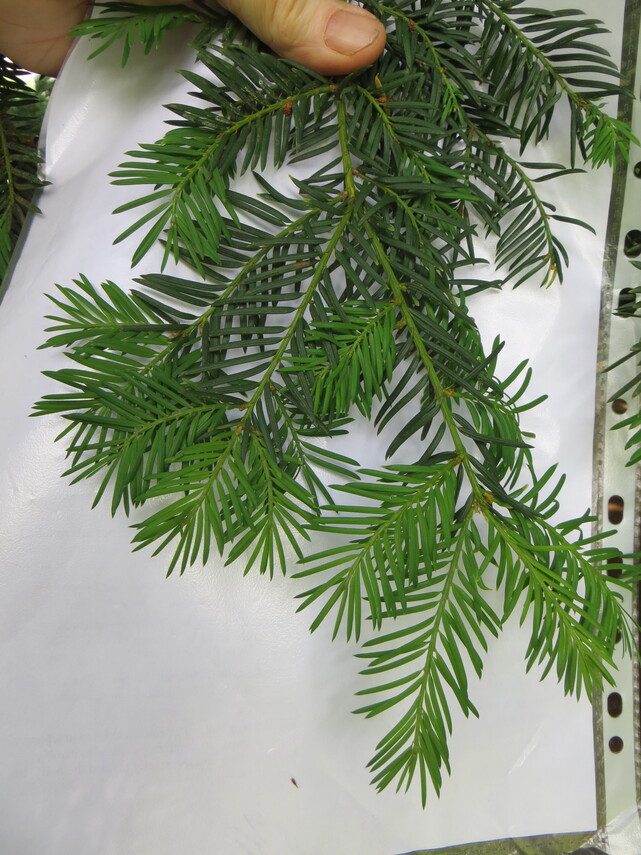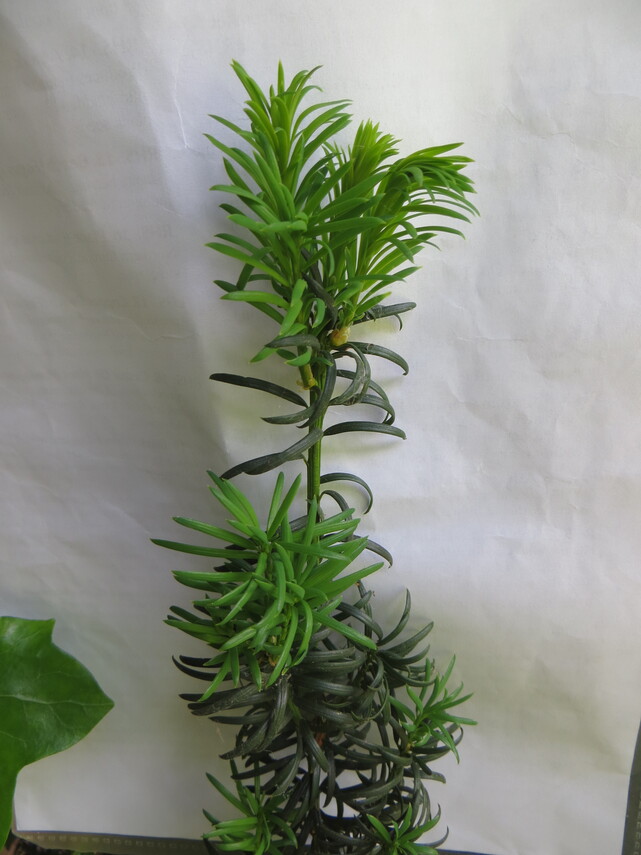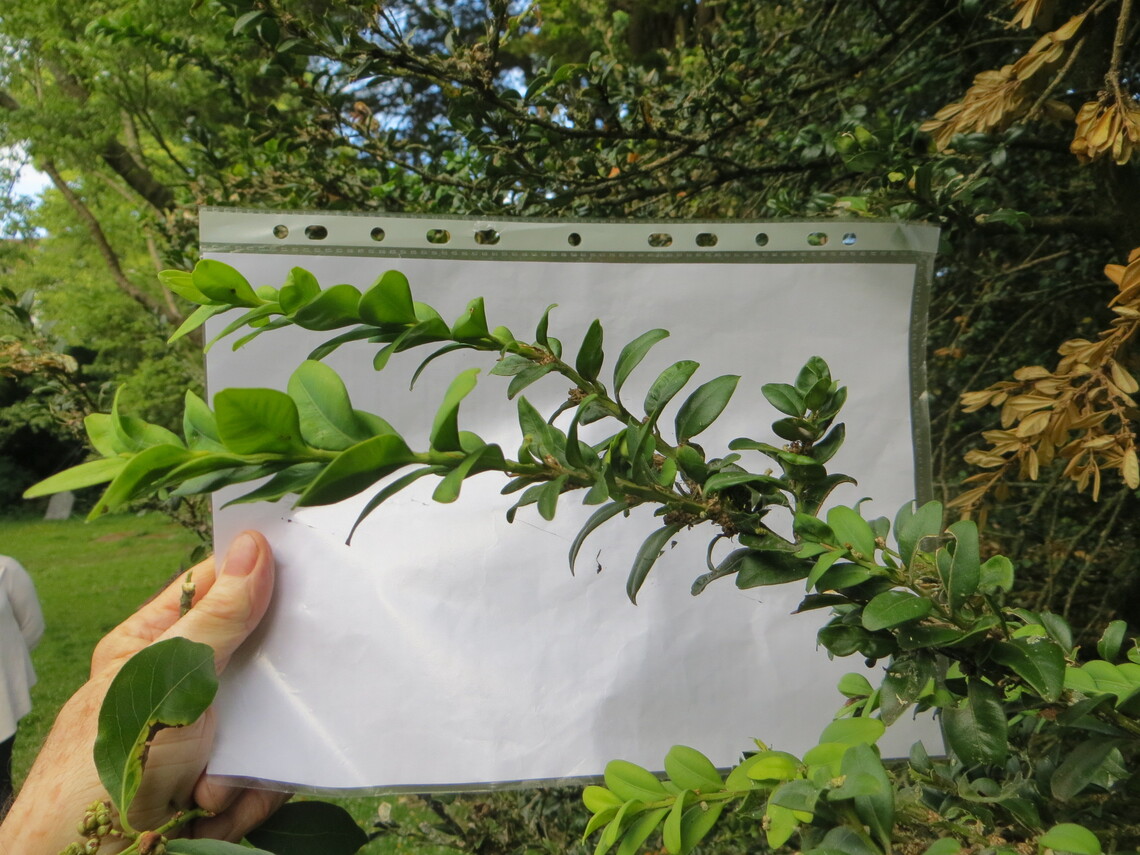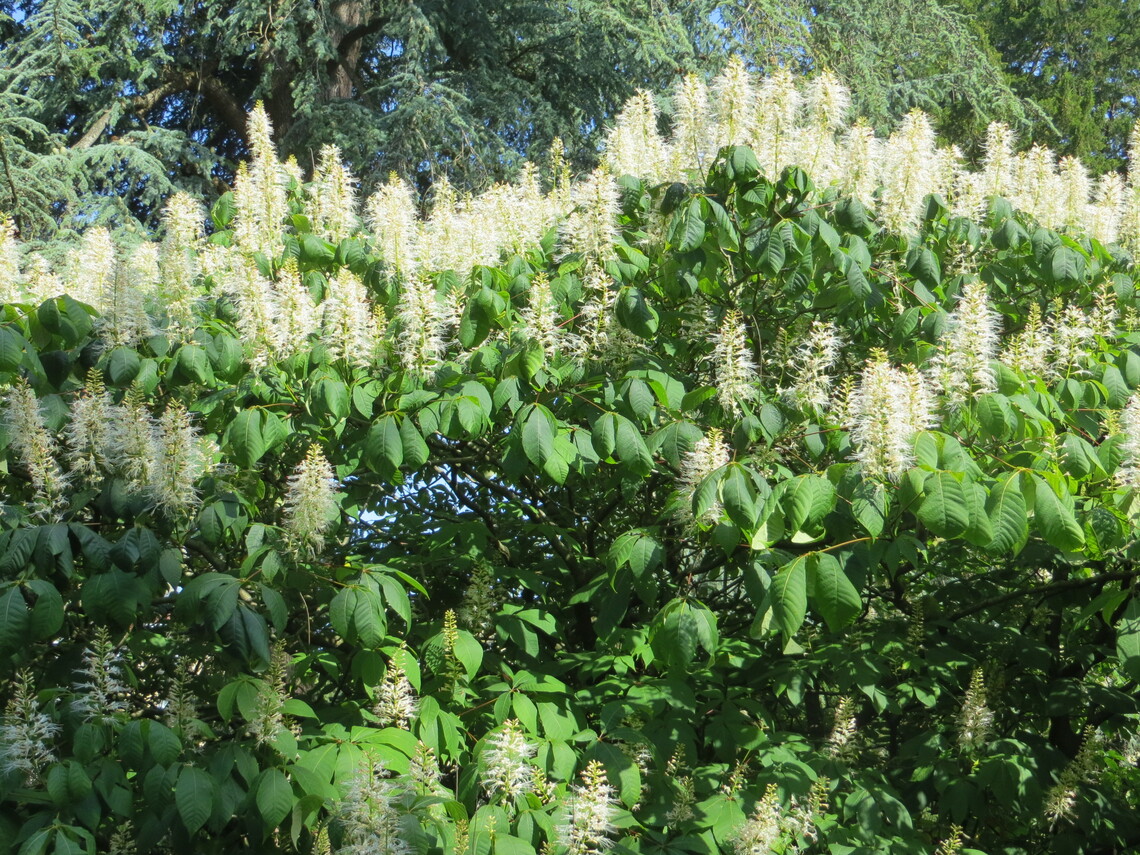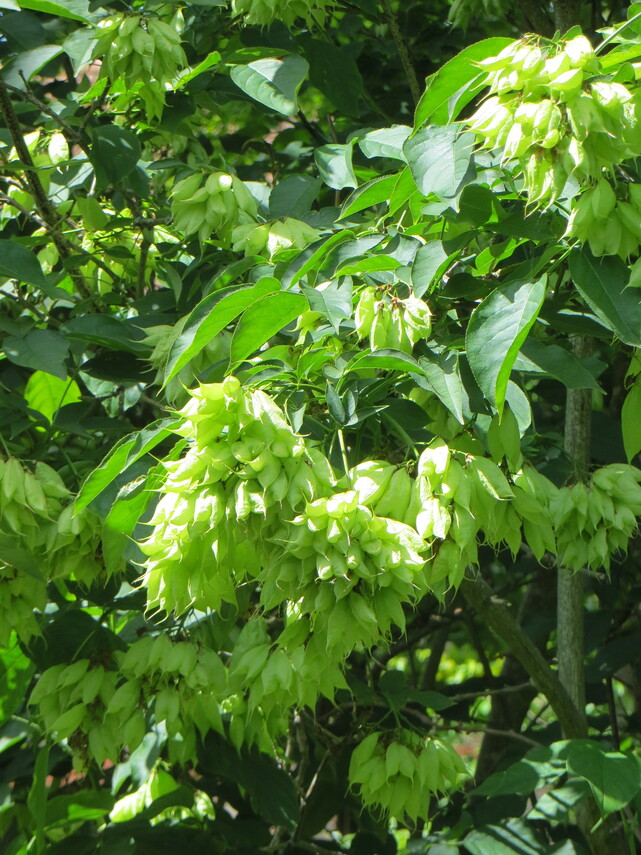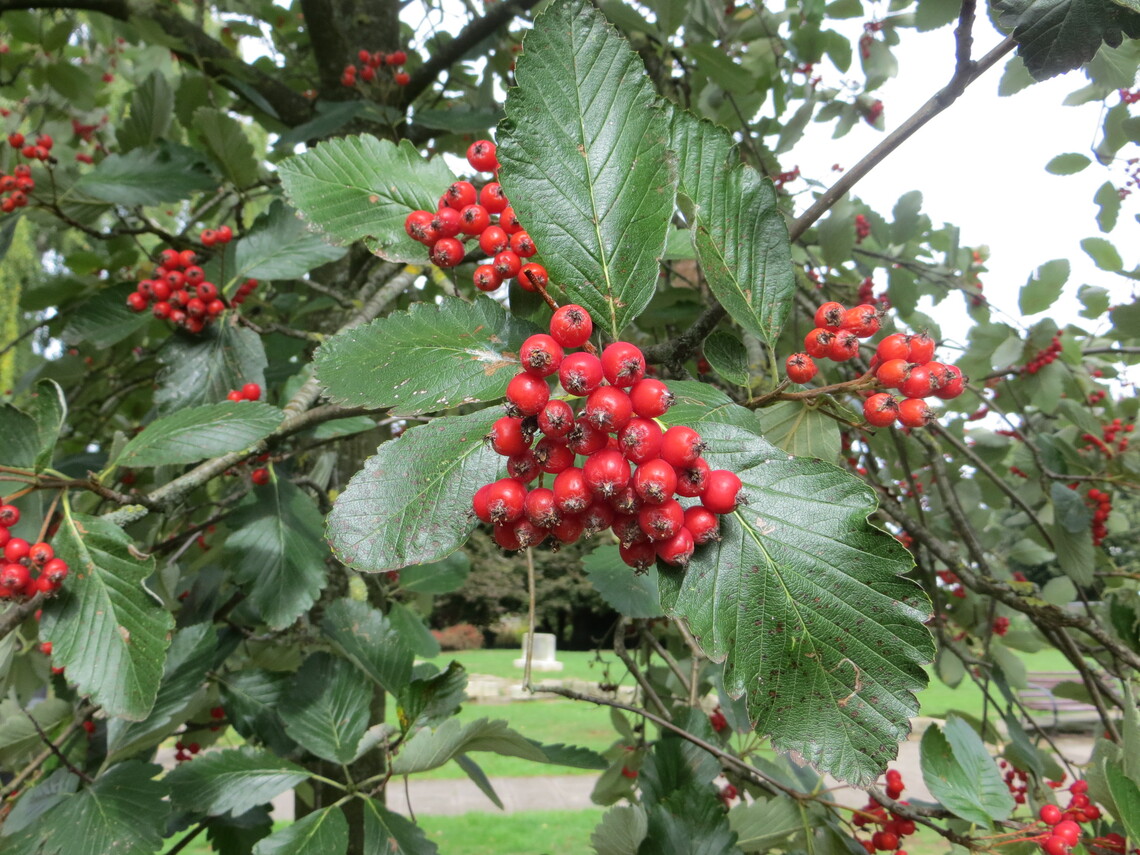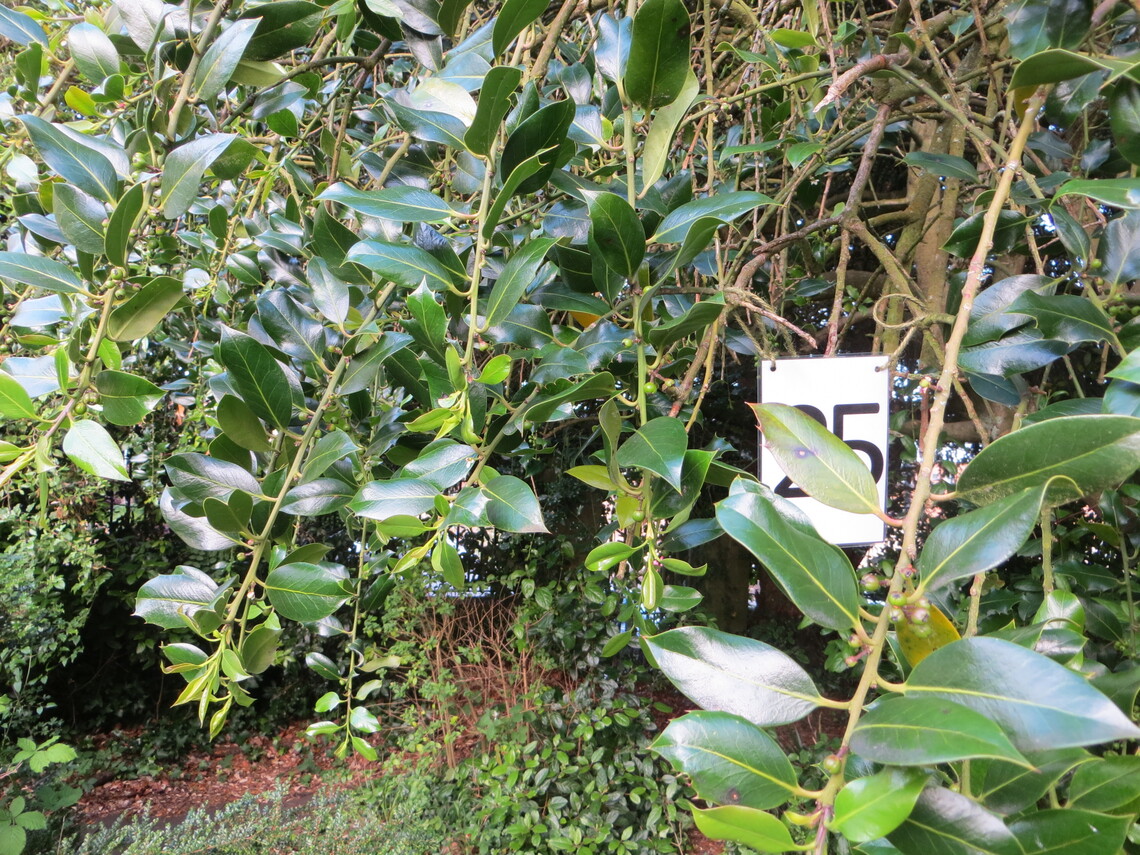This is a version of the tree trail used during Green Squares and Secret Gardens weekends in Clifton, created by Jennifer Sparkes and RoseMary Musgrave, whose original inspiration we gratefully acknowledge.
Starting from The Fosseway end - all the trees can be seen from the central path ( LHS/RHS Left/Right hand side).
The path with pleached lime trees (Tilia x vulgaris), popularly known as Birdcage Walk, leads through the 19th century graveyard of the demolished St. Andrew’s church. At the turn of the 20th century a churchwarden, Mr. Prowse, undertook to plant the churchyard with interesting trees and shrubs, many of which are still here today.
LHS 1. Handkerchief tree

LHS 1. Handkerchief or Ghost Tree (Davidia involucrata) Comes from China and is named after French priest Fathe Armand David, who was the first westerner to describe the giant panda. He was also known as Père David and introduced to Europe a species of deer, which was named after him, and he sent the first small group of ‘yellow rats’ from Mongolia to Paris in 1866. Later, 20 breeding pairs became the parents of all gerbils kept as pets today. Wikipedia entry
LHS 2. Persian ironwood
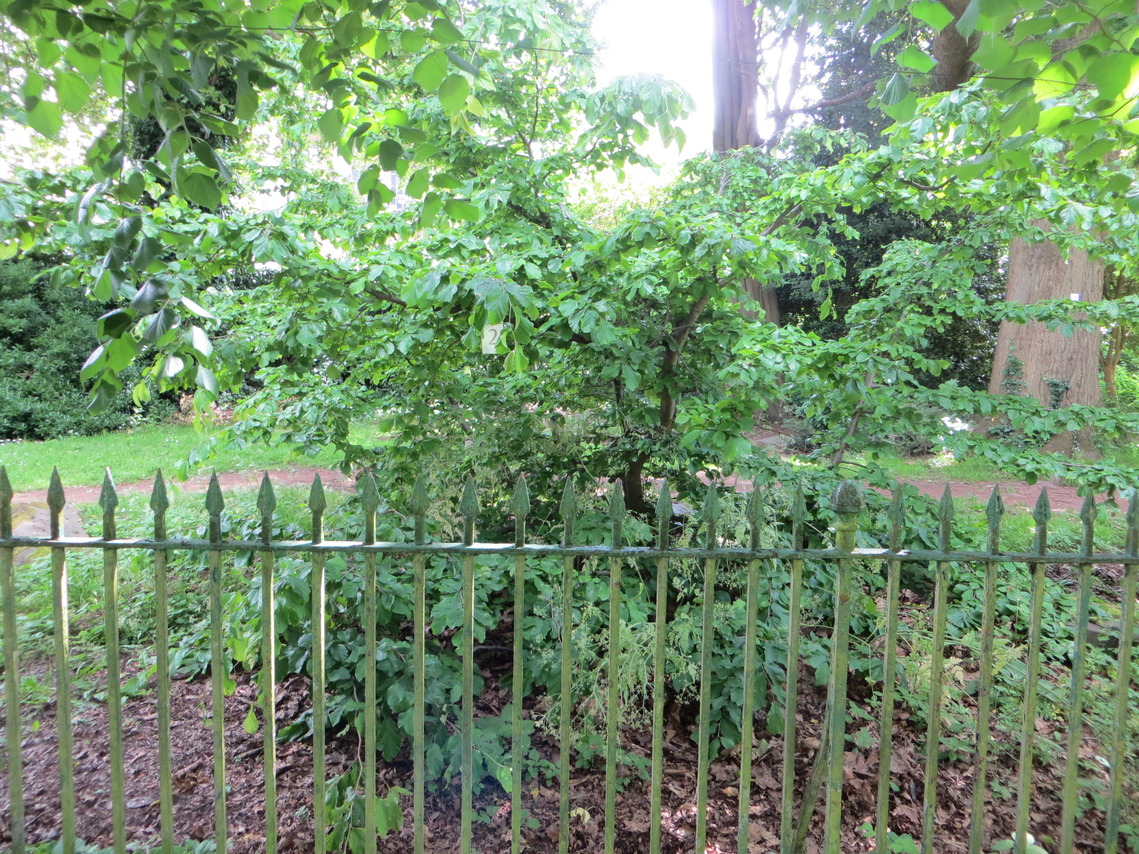
LHS 2. Persian ironwood (Parrotia persica) Native to Northern Iran and Azerbaijan. Named after Friedrich Parrot, a German scientist and keen mountaineer. In 1829 he reached the summit of Mount Ararat. Ironwood refers to the strength of its timber. Wikipedia entry
LHS 3. Red Oak
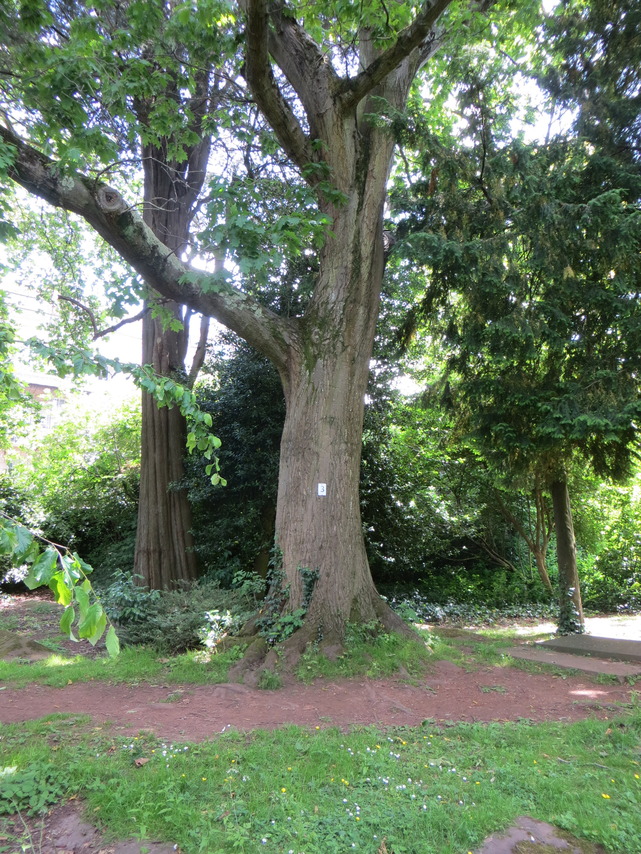
LHS 3. Red Oak (Quercus rubra) Native to North America. Quality red oak timber is of high value for furniture, flooring and veneer. Ornamentally it is usually grown for its autumn colour. Wikipedia Entry
RHS 4. Lime tree

RHS 4. Lime tree (Tilia x vulgaris) Native in most of the temperate northern hemisphere. The wood, soft with little grain is used for marionettes and building models.
RHS 5. Chusan Palm
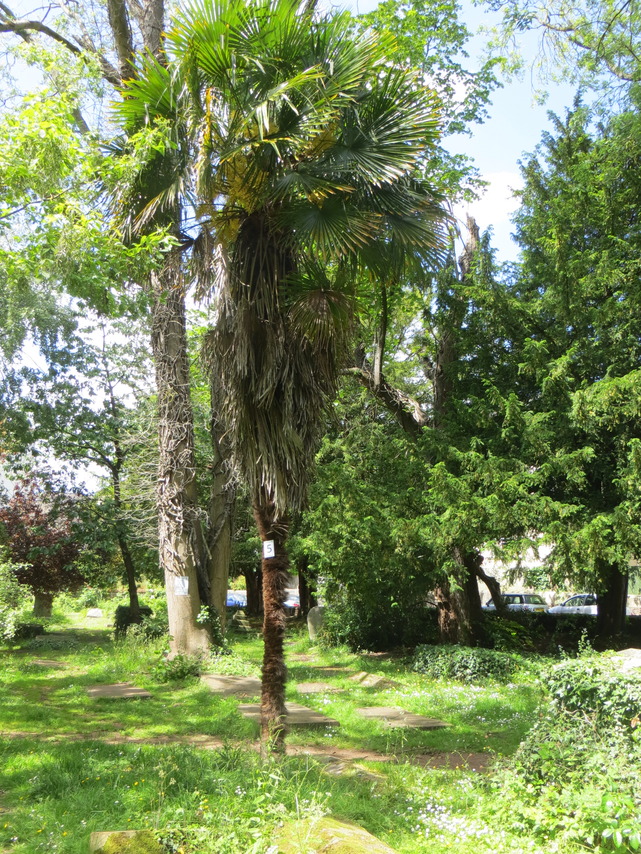
RHS 5. Chusan Palm (Trachycarpus fortunei) Has been cultivated in China and Japan for thousands of years for its coarse, but very strong, leaf sheath fibre, which is used for making ropes, sacks and other coarse cloth where strength is required. Wikipedia Entry
RHS 6. Ash Leaved Maple
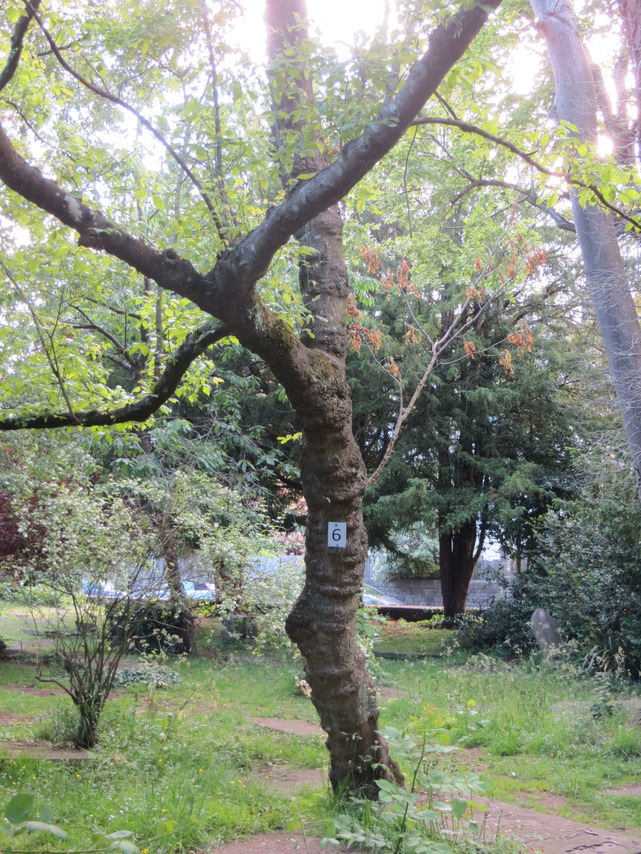
RHS 6. Ash Leaved Maple (Acer negundo) In 1959 it was identified as the material used in the oldest extant wooden flutes (now known as Anasazi flutes) from the Americas. Early instruments from Arizona have been dated to 620-670CE. Wikipedia Entry
RHS 7. Laburnum
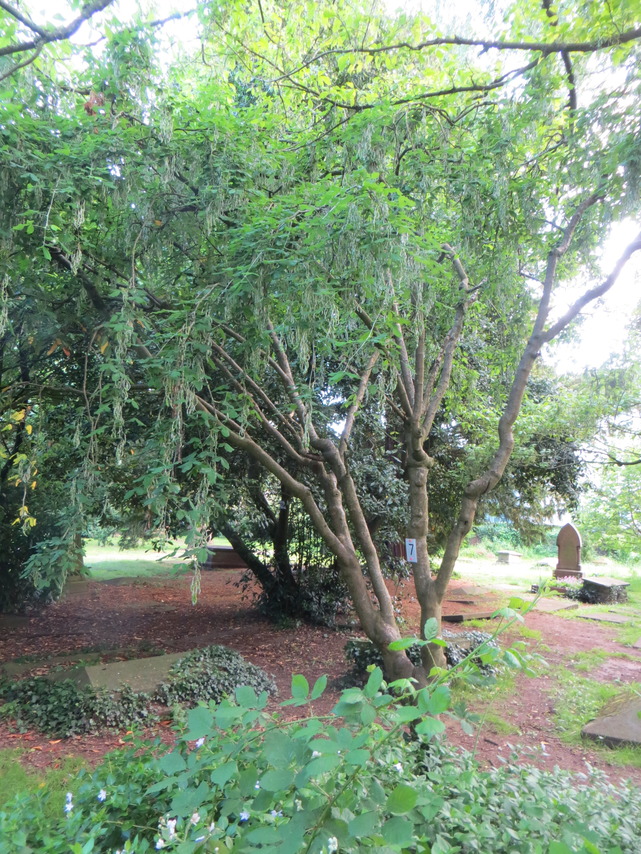
RHS 7. Laburnum (Laburnum anagyroides) has historically been used for cabinet making and inlay, as well as for musical instruments. In addition to wind instruments such as recorders, flutes and oboes, it was a popular wood for Great Highland bagpipes before taste turned to imported tropical hardwoods. It is a very hard wood, dark chocolate brown, with a butter-yellow sapwood. Wikipedia Entry
RHS 8. Bay Tree
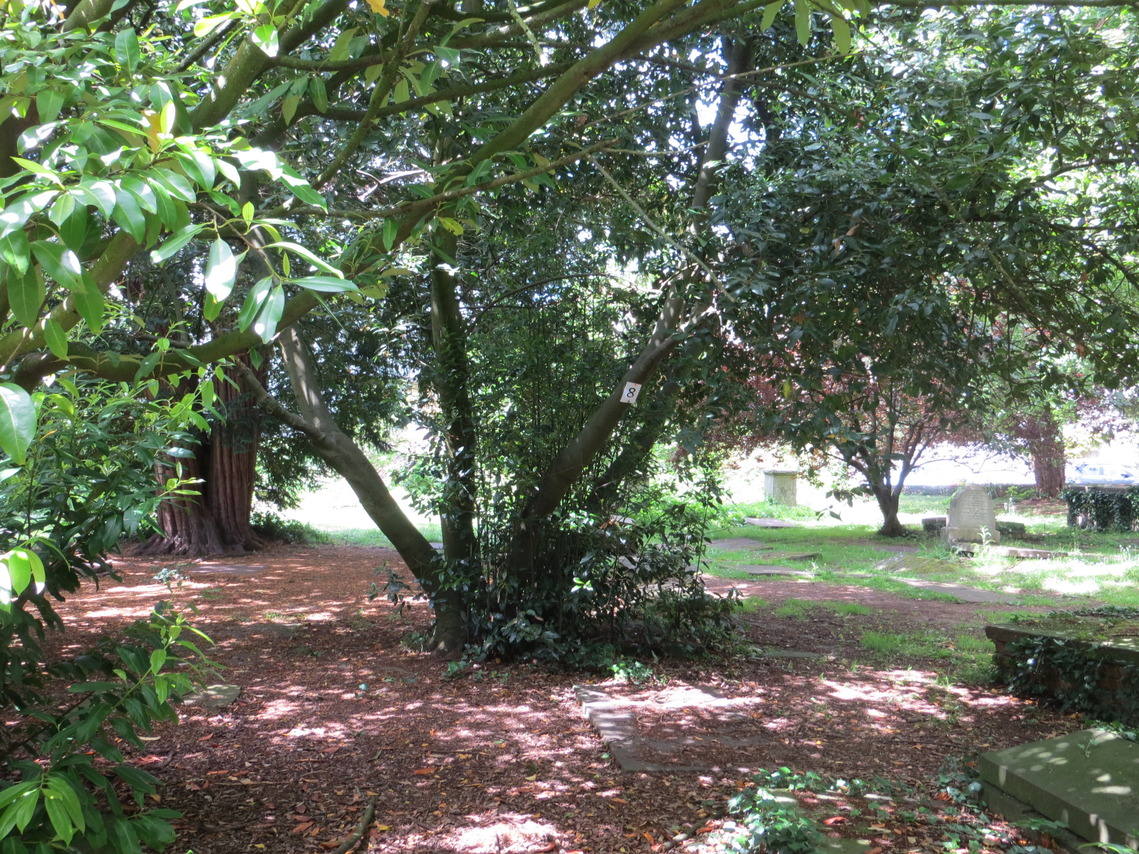
RHS 8. Bay Tree (Laurus nobilis) Bay leaves are used, fresh or dried, in cooking to give a fragrant flavour to soups, stews and other dishes. It figures prominently in classical Greek and Roman culture. Today in Italy those graduating from college or university still often wear crowns of laurel instead of the normal hat or cap. Wikipedia Entry
LHS 9. English Yew
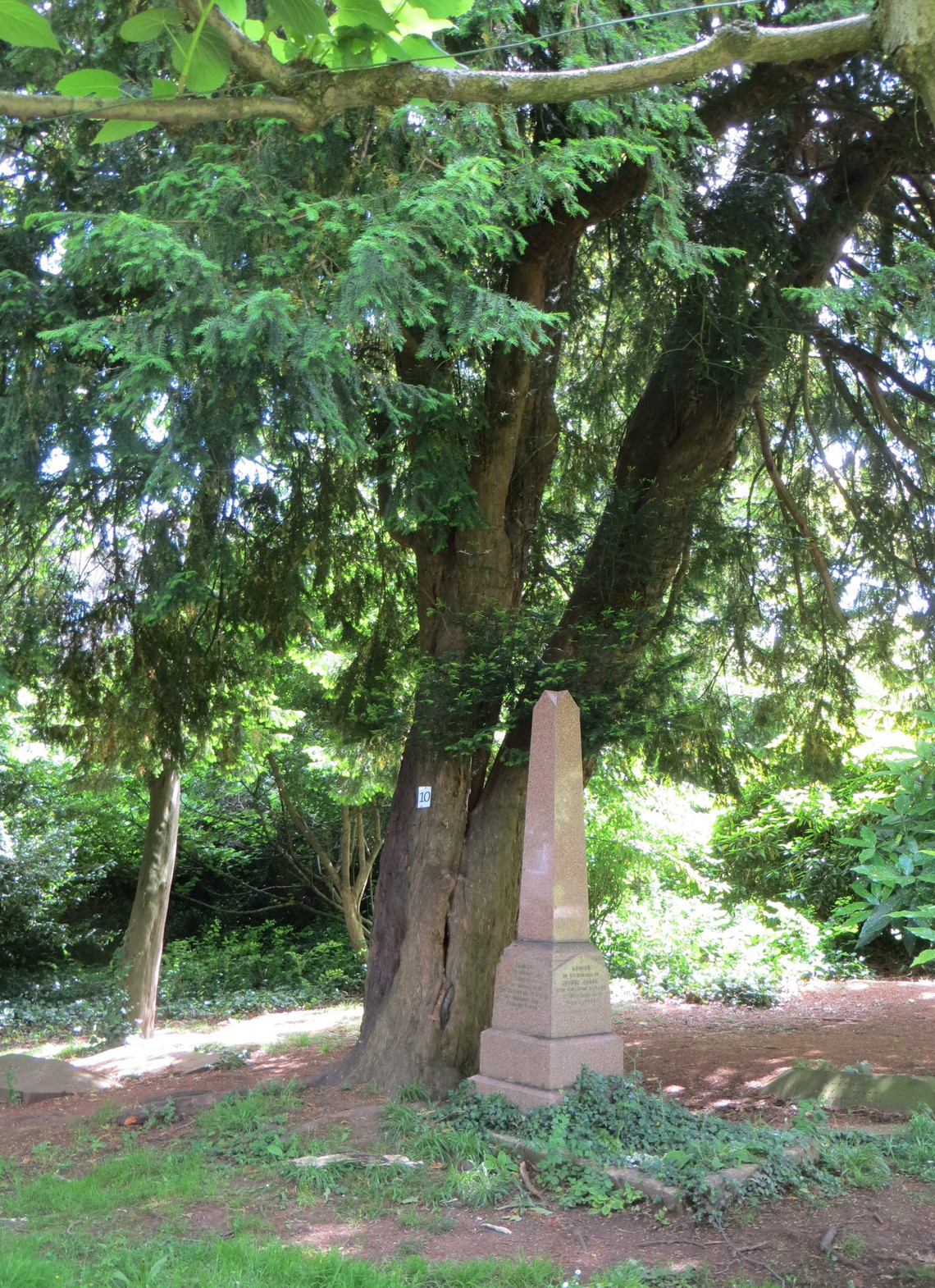
LHS 9. English Yew (Taxus baccata) The timber is rich orange-brown in colour, closely grained, incredibly strong and durable (this is how old trees can remain standing with hollow trunks). Traditionally the wood has been used in turnery and to make long bows and tools handles. Yew is a primitive form of conifer, bearing fleshy fruits rather than cones. Wikipedia Entry
LHS 10. Irish Yew
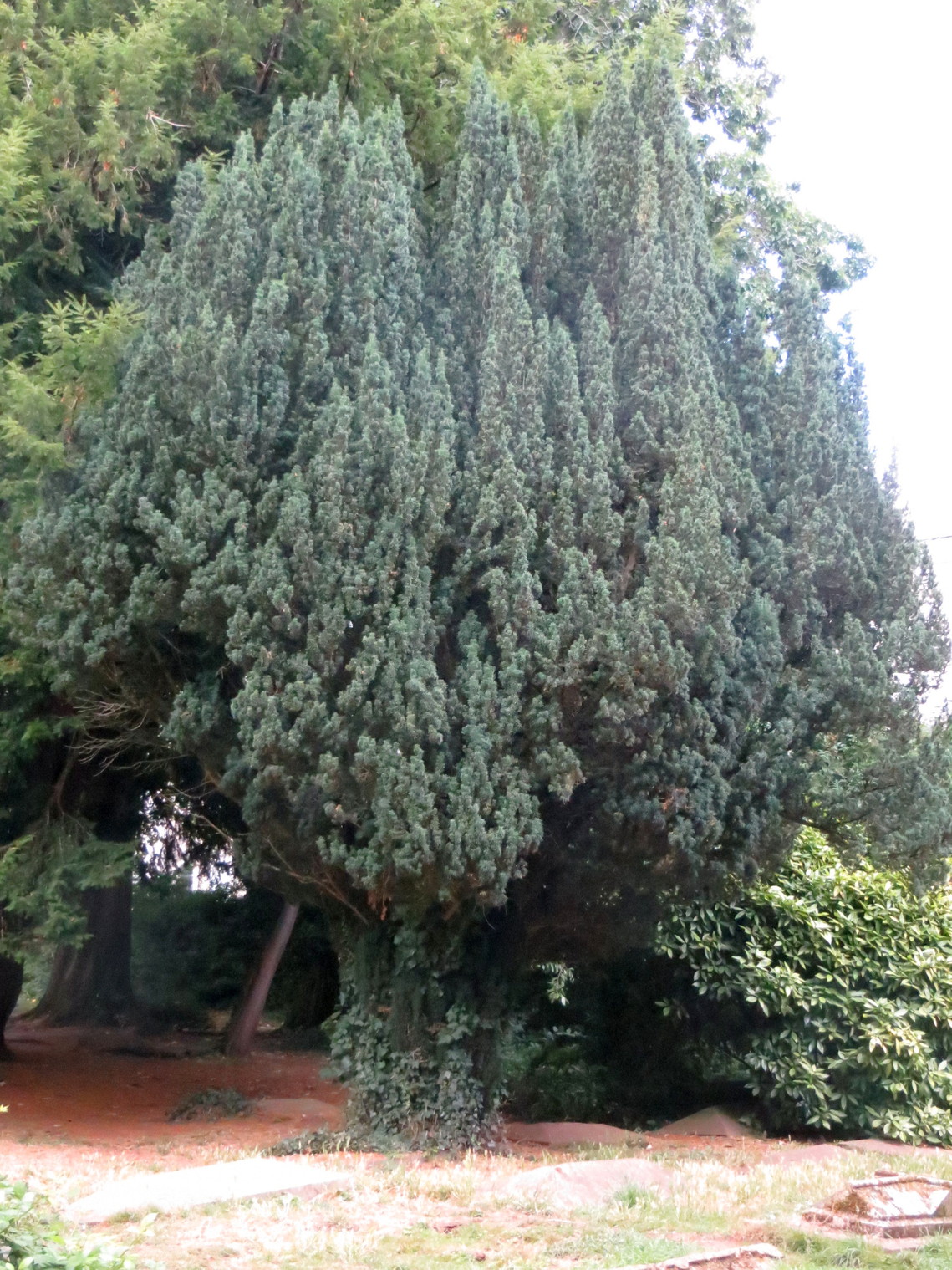
LHS 10. Irish Yew (Taxus baccata ‘Fastigiata’) Differs from the English Yew in that the leaves are borne in whorls around the stem, whereas the leaves of the English Yew are only on two sides of the stem. Wikipedia Entry
LHS 11. Box
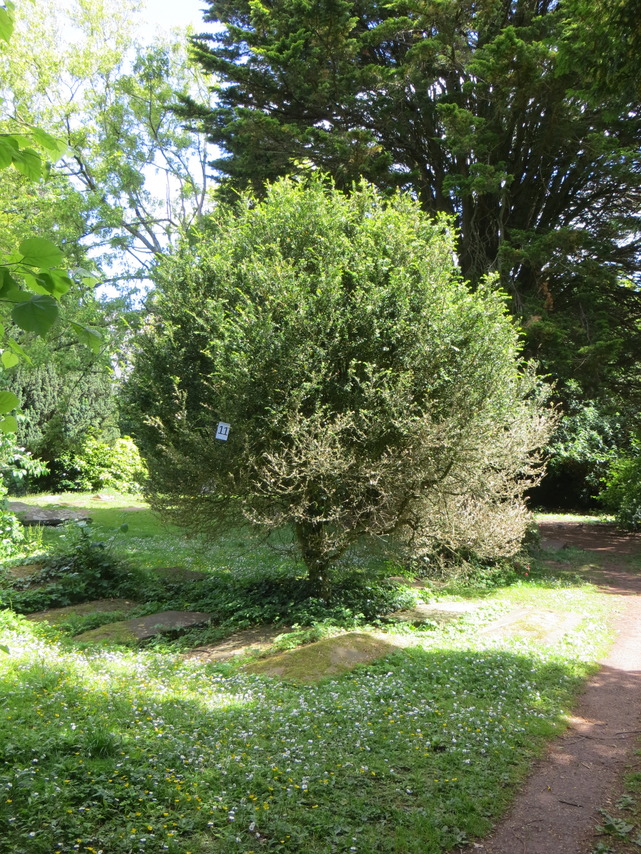
LHS 11. Box (Buxus sempervirens) Common box timber is finely textured and hard. It is used for wood engraving and to make violin pegs and Musical instruments. In 2011 box-tree caterpillars first appeared in the UK; they feed on the leaves within webbing that they make, and can completely defoliate a tree. Those in the churchyard are already badly infected. Wikipedia Entry
RHS 12. Bottle Brush ‘Buckeye’
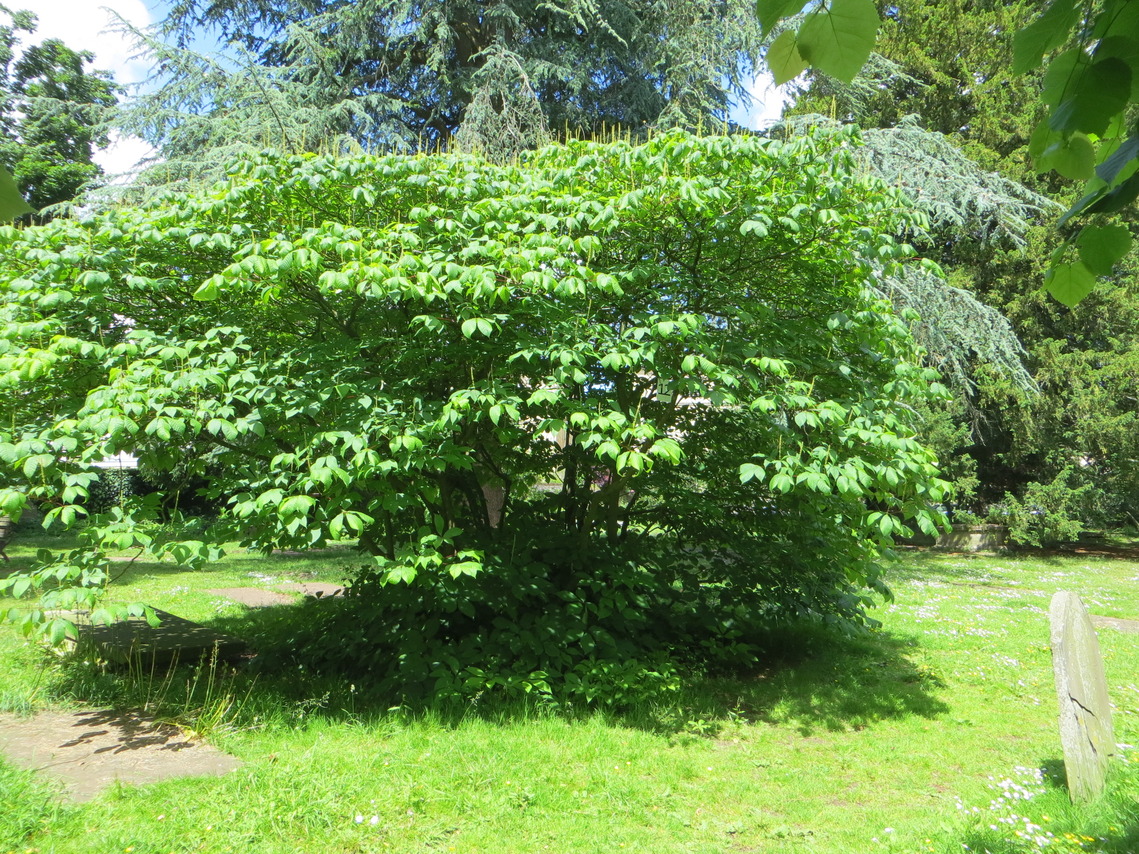
RHS 12. Bottle Brush ‘Buckeye’ (Aesculus parviflora) was introduce to British horticulture by John Fraser, who made his first ‘botanizing’ trip through the American South in 1785. The shrub was first ‘to be met in most of our nurseries by 1820’. It is the same family as the Horse Chestnut (Aesculus hippocastanum). Wikipedia Entry
RHS 13. Field Maple
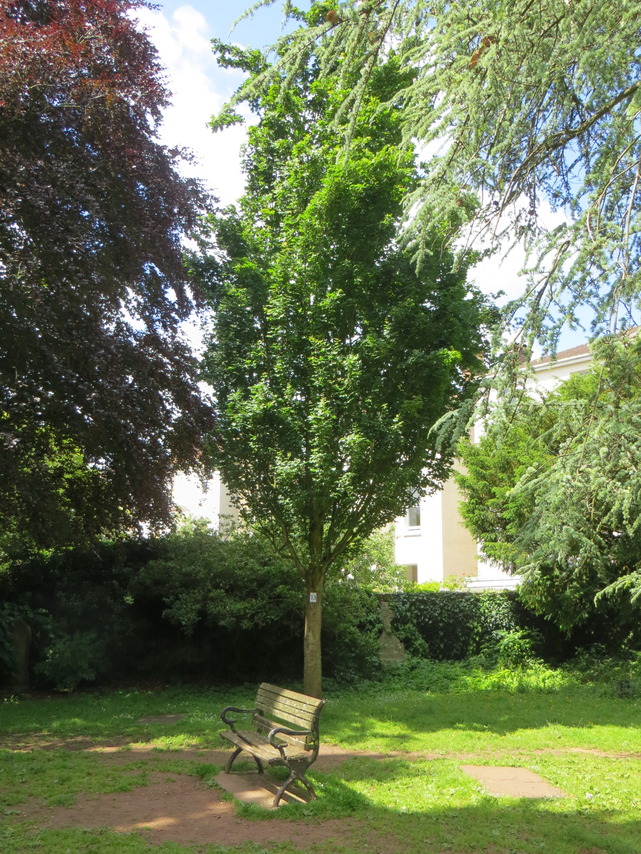
RHS 13. Field Maple (Acer campestre) In parts of Europe it was believd that maple branches hung around a doorway could prevent bats from entering the building. The herbalist, Culpeper, recommended maple leaves and bark to strengthen the liver. Wikipedia Entry
RHS 14. American Bladdernut

RHS 14. American Bladdernut (Staphylea trifolia) Produces pendant white flowers in Spring, which mature into bladder-like, teardrop-shaped fruits that contain several large black seeds. Wikipedia Entry
RHS 15. Beech
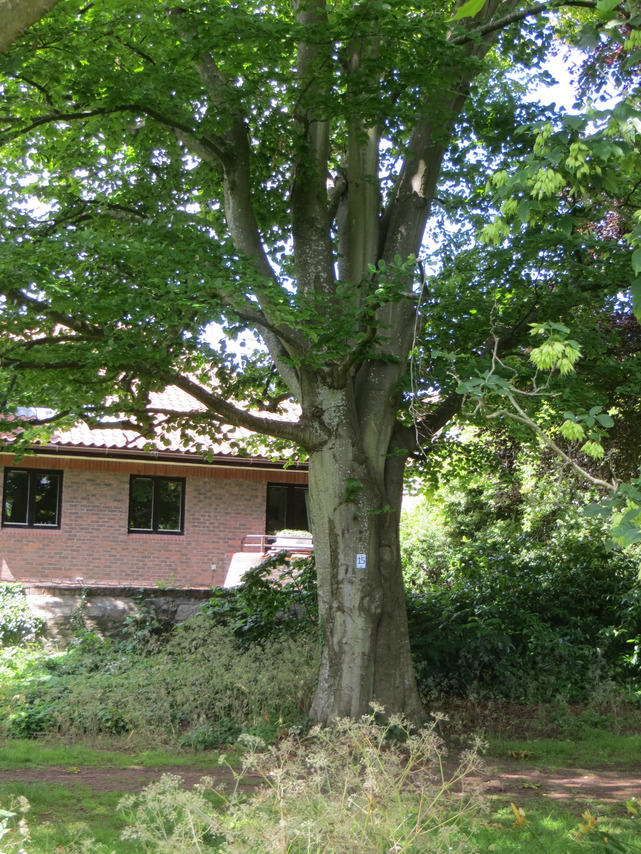
RHS 15. Beech (Fagus sylvatica) In Celtic mythology, Fagus was the god of beech trees. Beech was thought to have medicinal properties, the leaves were used to relieve swellings, and a poultice could be made by boiling them. The wood burns well, and was traditionally used to smoke herring. The mast (edible nuts) was used in the autumn to feed pigs. Wikipedia Entry
RHS 16. Plane
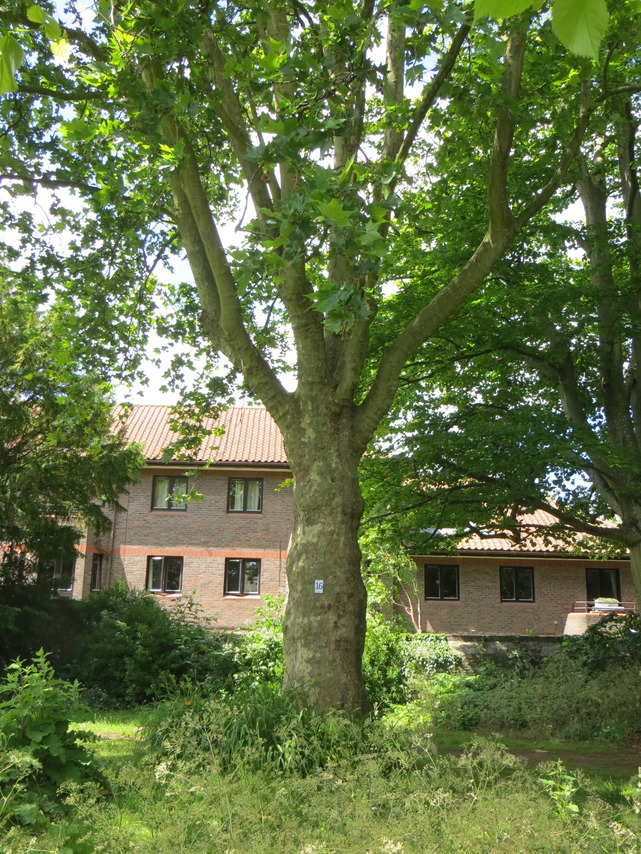
RHS 16. Plane (Platanus sp.) Plane trees are pollution tolerant so are frequently planted as street trees. They are found throughout Northern Europe
LHS 17. Copper Beech
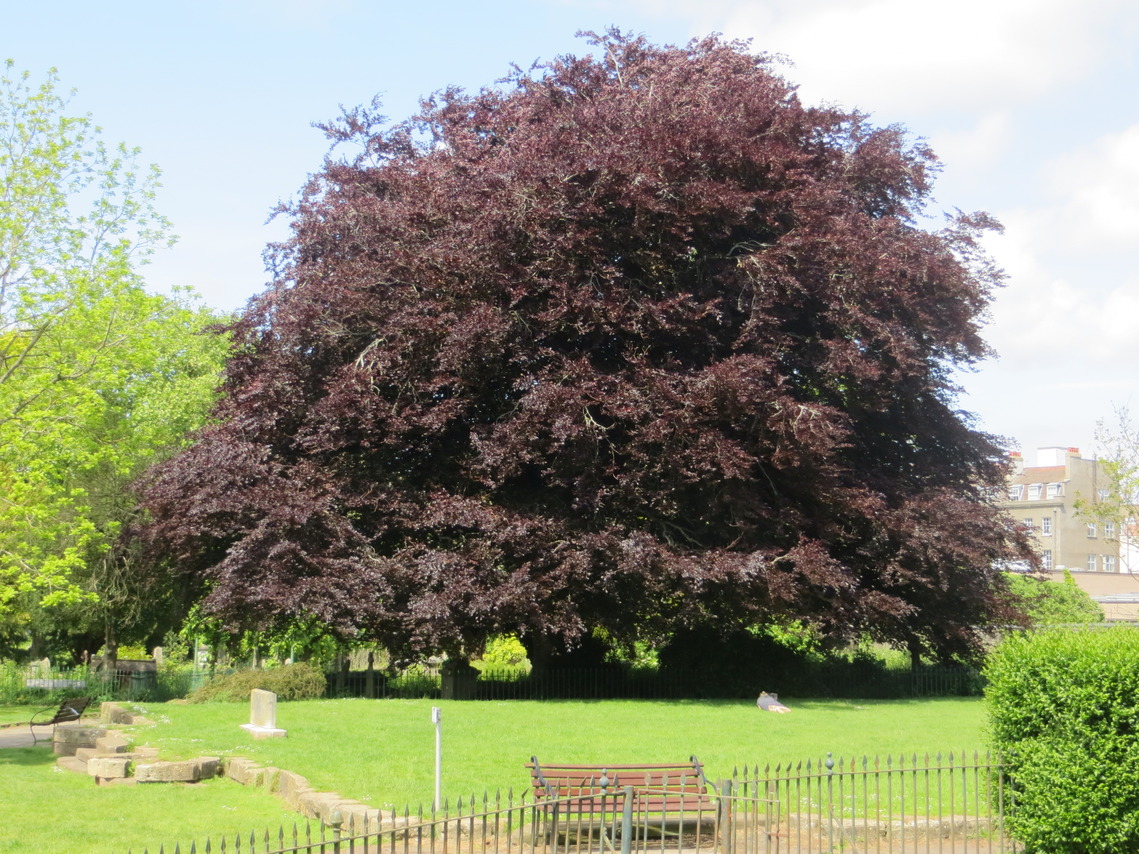
LHS 17. Copper Beech (Fagus sylvaticus purpurea) Appeared as natural mutants of the common Beech in various parts of Europe as early as the 15th century. Popular in 19th century gardens and landscapes. Wikipedia Entry
RHS 18. Black Walnut
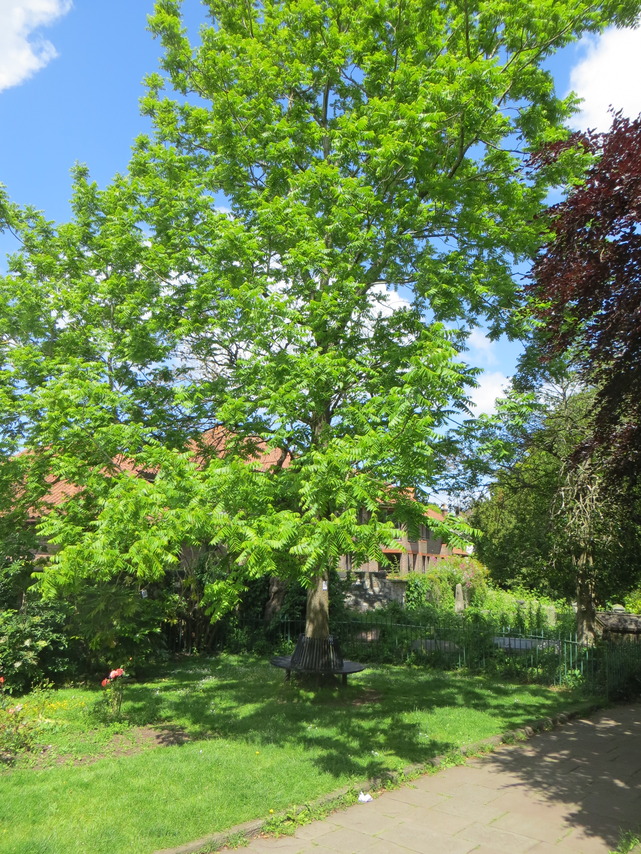
RHS 18. Black Walnut (Juglans nigra) Native to eastern North America, the bark, leaves, husks and nuts have been used medicinally for thousands of years. Uses include as a mosquito repellent, and as relief from the symptoms of fever, kidney ailments, gastrointestinal disturbance, ulcers, toothache and snake bite, among others. The fruit husks have been shown to contain a compound that inhibits bacterial and fungal growth. It is being tested for its anti-cancer properties. The timber is very attractive and very valuable. Wikipedia Entry
RHS 19. Gingko / Maidenhair Fern
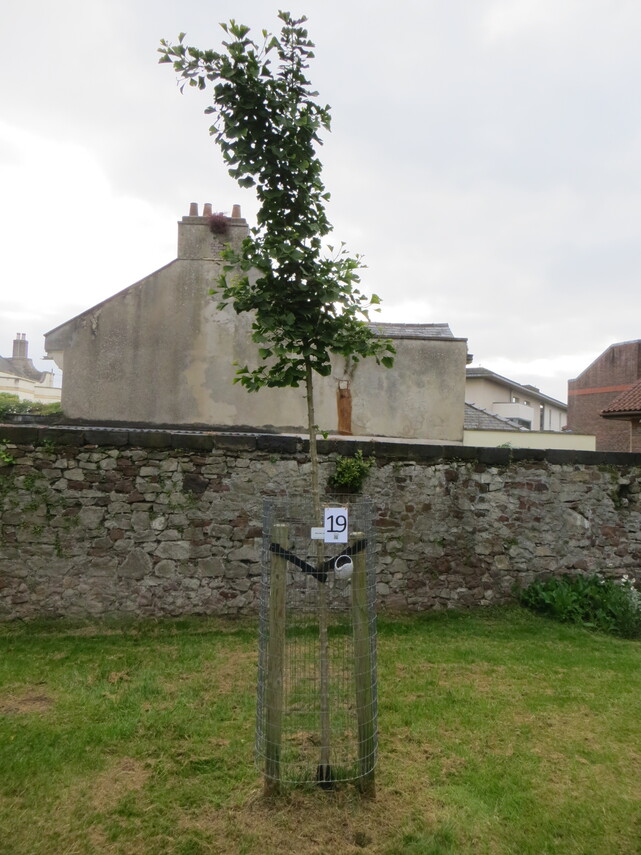
RHS 19. Gingko / Maidenhair Tree (Ginkgo biloba) Native to China, the Ginkgo is a living fossil, found in sediments dating back 270 million years. The leaves are unique among seed plants, being fan-shaped with veins radiating out into the leaf blade. The first use as a medicine is recorded in the late 15th century in China; in western countries its first registered use was in Germany in 1965. Wikipedia Entry
RHS 20. Silver Birch

RHS 20. Silver Birch (Betula pendula) In early Celtic mythology the birch symbolises renewal and purification. Bundles of birch twigs were used to drive out the spirits of the old year. It is also used as a symbol of love and fertility. It was used to make hardwearing bobbins, spools and reels for the Lancashire cotton industry. The bark is used for tanning leather. Wikipedia Entry
RHS 21. Ash Tree

RHS 21. Ash Tree (Fraxinus excelsior) Was thought to have medicinal and mystical properties and the wood was burned to ward off evil spirits. In Norse Viking mythology, Ash was referred to as the ‘Tree of Life’. Even today it is sometimes known as the ‘Venus of the Woods’. In Britain Ash is regarded as a healing tree. Ash dieback has become a serious threat in recent years, a fungal infection causing loss of leaves and ultimately death of the tree. It is thought tens of thousands of trees could die, potentially changing the UK landscape forever. Wikipedia Entry
LHS 22. Swedish Whitebeam
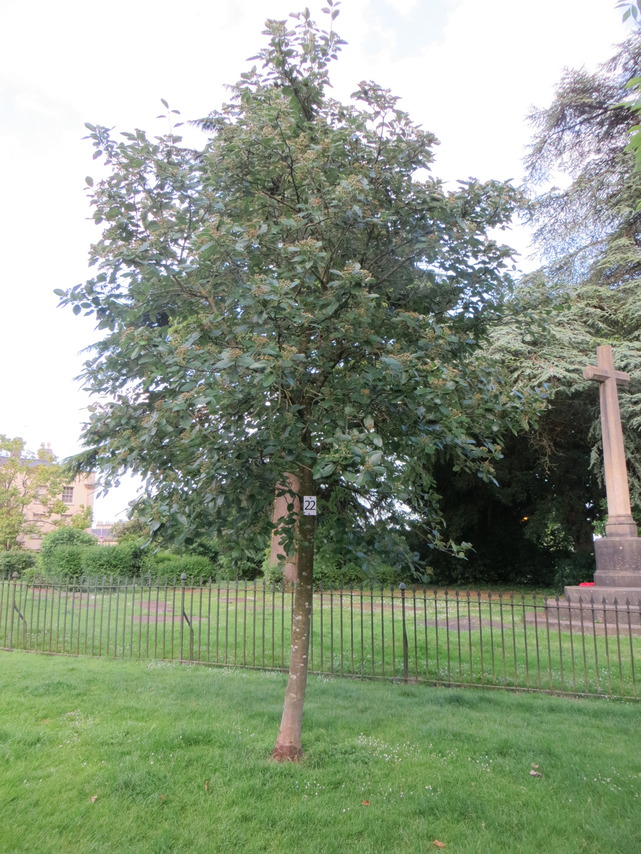
LHS 22. Swedish Whitebeam (Scandosorbus intermedia) Native to Scandinavia. The timber is sometimes used for turnery in the making of tool handles. It has small red berries in the autumn. Wikipedia Entry
23. Cedar
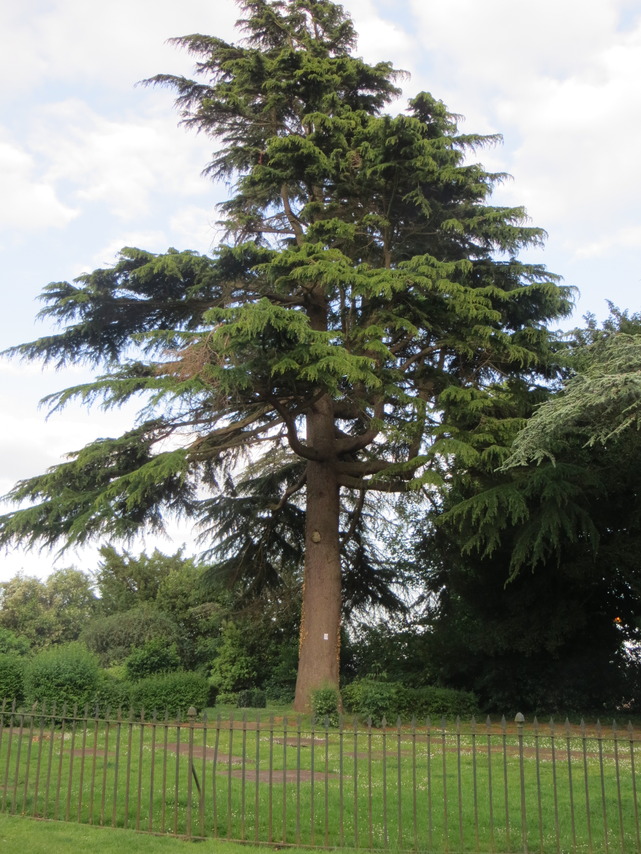
23. Cedar of Lebanon (Cedrus libani) In the UK, cedar was planted in nearly every stately home and mansion from the 1740s onwards, however, it is not commonly planted now. It is a hard, durable wood. Cedar wood repels clothes moths. This tree stands on the site of the tower of the first church of St Andrew’s. Wikipedia Entry
24. Neolitsia
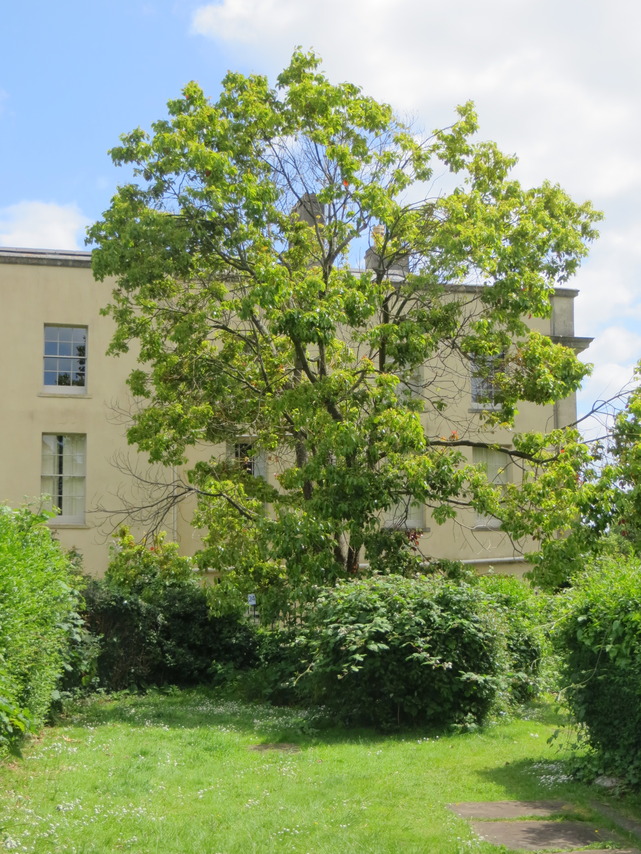
24. Neolitsea (Neolitsea sp.) Native to China, Korea, Taiwan and Japan, it is a relatively rare tree in this country. The oil in the scented leaves has anti-inflammatory properties. Wikipedia Entry
25. Weeping Holly or Yaupon Holly
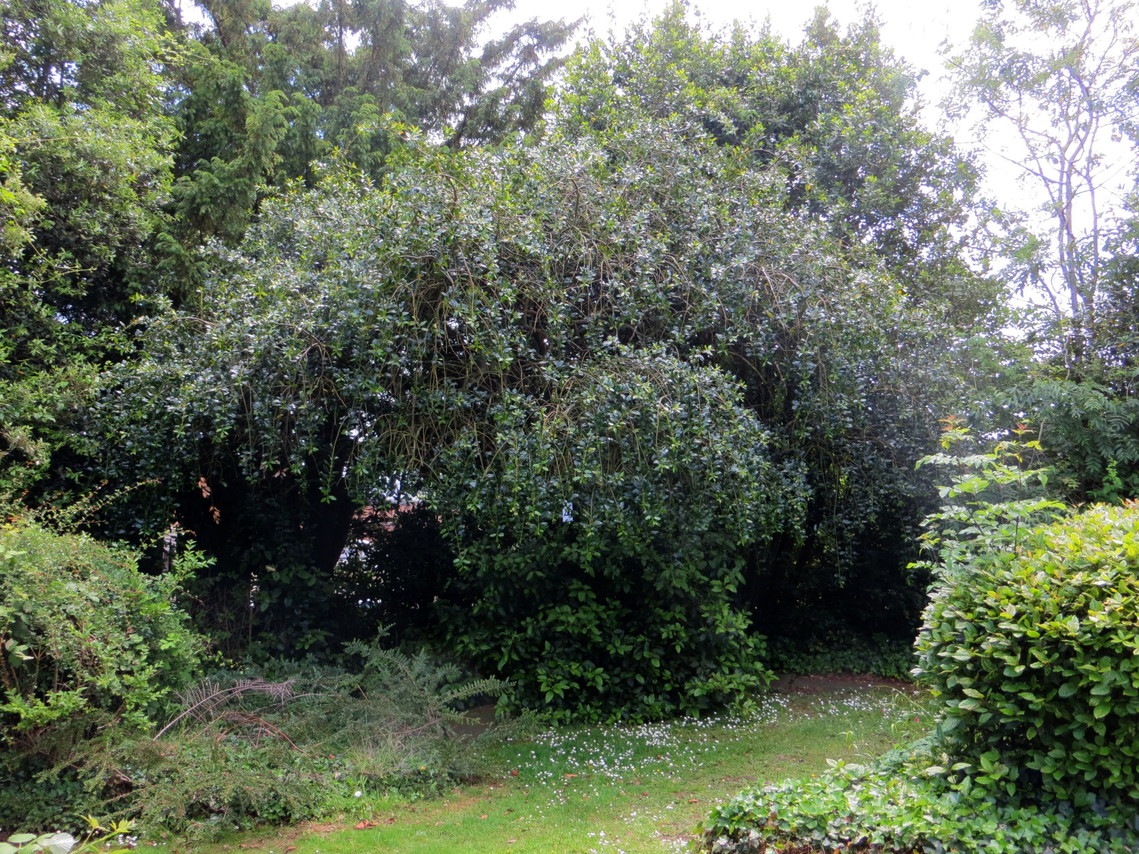
25. Weeping Holly or Yaupon Holly (Ilex vomitoria) Native Americans used the leaves and stems to brew a drink for male-only purification and unity rituals. The ceremony included vomiting, and Europeans incorrectly believed that it was Ilex vomitoria that caused it - hence the Latin name. The only native North American plant to contain caffeine, it is the source of ‘Yaupon Tea’, still commercially available. Wikipedia Entry

